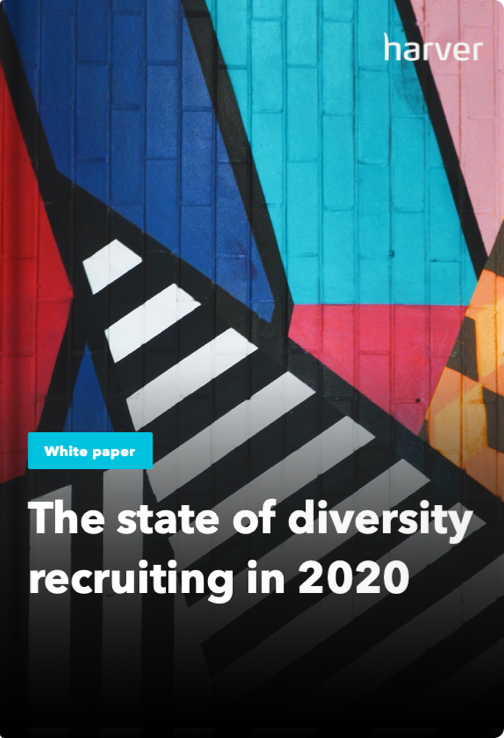Every sector has its lingo. If you want to know what you’re talking about, you need to understand the jargon. It’s like learning a language; once you know the words, you can start to build conversations. Here are 10 HR-Tech terms to help you talk the talk.
What's in?
1. Predictive preselection
Predictive Preselection is what you get when you implement Predictive Analytics in your preselection process. The number one reason for organisations to use predictive preselection is that it allows them to make hiring choices based on data rather than just gut feeling. As a consequence, the percentage of bad hires can drastically be brought down. This in turn, will positively affect the employee turnover rate.
Predictive Preselection makes use of Predictive Analytics. As the name suggests, Predictive Analytics are used to make predictions about unknown future events. Supported by a mix of statistical, machine learning, modeling and data mining techniques, it is possible to set up models that provide estimations about the likelihood of a future outcome.
2. Talent pooling
“A talent pool is nothing more than a database of candidate profiles interested in working for your company.”
Finding talent can be a big headache. The numerous different channels and platforms you can use nowadays don’t always make things easier either. Having your own talent pool to fish in when needed seems an appealing alternative; it reduces the cost of recruitment as well as the time to hire. Before you start digging your pool though, you might want to think about the following:
Start With the Why
Ask yourself what you want to get out of your talent pool. Do you want to create a community of people interested in your organisation and convert them into applicants? Or do you see it more as a targeted mailing list? Know what you want to achieve beforehand.
Content Is Key
If you want to engage with your tribe, you need to give them something more than an overview of job descriptions once a week. You want them to get excited about your company, not bored. Prepare a content plan and have a little stock of great stories about the business ready to share with the world.
The Numbers Tell The Tale
Assess, assess, assess. We can’t stress this enough, as it’s such an important part of pretty much any strategy you want to implement. If it’s not possible to measure what you’re doing with your talent pool, you’re missing out on a lot of data and thus important information.
Here you can find a few other things to keep in mind.
3. ATS – Applicant Tracking System
“An ATS, is a software application that’s meant to help a company recruit employees more efficiently. The process may include anything from job posting and resume screening to dealing with assessment questions. ”
Shorter hiring circles, attracting top candidates and a considerable reduction of administrative work. Those are just a few of the benefits an applicant tracking system provides you with. It’s true indeed, an ATS can save you a lot of time and release you from tedious tasks such as resume collection and manually confirming applicant interviews.
There’s no ‘one size fits all’ solution however. An ATS might be the best thing that happened to one company and at the same time cause pure frustration within another organisation. Common challenges include: suitable candidates ending up in the dreaded ‘black hole’ because the system has a limit for the applicant’s information, and companies simply not being ready for an ATS.
Two tips if you want to start working with an applicant tracking system; be sure your employees know how to work with it (if they don’t, get them trained!), and verify if your brand’s online presence is ATS-compliant.
4. Mobile Recruiting
“Mobile recruiting means using all sorts of mobile technology – think of mobile career sites, apps, texts and social recruiting – to attract, engage and eventually convert candidates.”
In a time where babies are practically born with a smartphone in their hands, it makes sense to think of a mobile recruitment strategy. A vast majority of job seekers (90%), uses mobile appliances to look for new opportunities and almost every millennial out there connects to the internet on-the-go.
Here you can find out more about setting up a decent mobile recruitment strategy and 5 things you should focus on.
5. SaaS – Software as a Service
“SaaS, is a way of licensing and distributing software and one of the most common deployment methods for HR technology these days. A third-party provides the applications – all of which are hosted in ‘the cloud’ – and makes them available to customers via the internet.”
Any cloud based service where customers are able to access the software applications via the internet can be defined as SaaS. Dropbox, Salesforce and Google Analytics are all well-known examples of Software as a Service, also referred to as on-demand software.
SaaS users subscribe to the service and the software applications are used online. If there is a need to save files then this can be done in the cloud rather than on the individual’s computer. It’s easy to see why the use of SaaS is interesting for (big) organisations. The benefits of on-demand software are obvious: easy access anywhere and on any kind of device, no need for mass-storage capacity and updates are automated.
6. API – Application Programming Interface
“To put it simply, you could say that an API is a manual that provides programmers with the building blocks they need to develop a program.”
API is not specifically an HR Tech term, but nonetheless unmissable in your vocabulary. API stands for Application Programming Interface and is a set of routines, protocols and tools for building software applications. It defines the way in which one computer program communicates with another. What’s more interesting however, is the fact that companies allowing others (competitors and third parties for instance) to use their API can enrich their own services that way. Here you can read more about these so-called open API’s.
7. TMS – Talent Management System
“A TMS is a software system that deals with ‘talent’. Talent Management Systems aim to address long-term strategic goals and focus on assisting organisations on matters such as succession planning.”
There are four pillars of talent management: recruitment, performance management, learning & development and compensation management. There is software available for every pillar and even integrated equipment that addresses all of them at once. An outline on the why of talent management systems:
I. Recruitment
We’ve mentioned it before and we’ll probably mention it again, finding great talent can be a big headache for HR professionals. The right recruitment software and the use of data can help you on your research, communication and engagement with applicants.
II. Performance Managements
Remember the good old Annual Review? The one where you’d sit together with your boss for about 20 mins, ticking of boxes on a wrinkled piece of paper? No more! Many companies have changed their policy from being a formality on the bottom of a manager’s list into a dynamic, ongoing process. Two main changes can be identified: the model is about coaching rather than just assessing, and several people are involved in the reviewing system instead of one – often senior – person.
III. Learning & Development
This is a HR discipline that has been using HR software for a long time. We’ve talked about it a little while ago on our HR-Tech blog. You can read more about the use of software for your employee’s personal development and training here.
IV. Compensation Management
Rather than spending many frustrating hours wrestling with an Excel spreadsheet, automate this not-so-pleasant task. What else, you ask? Compensation management software increases visibility into employee rewards which in turn leads to a boost in motivation. According to the experts anyway.
8. HRMS – Human Resources Management System
“An HMRS is a software application (or a combination of applications) that combines various HR functions. Think of benefits administration, payroll, and performance analysis for example. A Human Resources Management System helps automate repetitive and time consuming tasks.”
The first Human Resources Management Systems emerged somewhere in the eighties of the 20th century. The main reason for using an HMRS, back in the day as well as now, is to support you in your daily activities. This can mean different things to different organisations: automating time consuming administration tasks, tracking employee data or managing recruitment information. Most companies will use an HMRS for various purposes however, as the same system integrates different functions.
9. Succession Planning Software
“Succession planning, as you might expect, is all about the future. Companies think of succession planning to make sure they have enough competent and experienced people ready to succeed current leaders or senior managers when they leave.”
It’s one thing to try and find the best talent out there to join your organisation as a junior associate. It’s a completely different story when one of your senior managers, the person that has been with the company for over a decade, leaves with a short notice. How and where are you going to find a suitable replacement without losing too much precious time? It’s exactly this scenario that organisations want to avoid by using succession planning.
One way of doing this is through talent-pool based, succession planning software. We spoke about talent pools and what to think of when you want to start one a few weeks ago. Here you can read more about this.
Now, back to talent pools in relation to succession planning. How exactly does this work? Depending on the size of your organisation and the number of departments you want to start planning for, you can have a different pool for every division. Each talent pool consists of employees ready to fill the role of someone who leaves. In order to get the people in the pool ready, there is specialised software out there that keeps track of data, determines competencies and makes talent development a walk in the park. This way, succession planning software can help you prepare the next generation of employees to take your company to the next level.
10. HCA – Human Capital Analytics
“HCA, also referred to as human recources analytics or talent analytics, is the application of data mining and business analytics techniques to HR data. The goal of Human Capital Analytics is to give an organisation insights on how to manage employees efficiently.”
Most companies have a common goal: to reach their business targets quickly and efficiently. Data on how to manage employees more effectively can help organisations in reaching their business objectives even faster, which is one of the reasons why they are interested in Human Capital Analytics. The biggest challenge for HCA however, is to decide what data should be gathered, and how to use those data to make predictions about the capabilities of employees. After all, what good is it to have an incredible amount of interesting data if you don’t know how to use them?
Well, that’s a wrap. Thanks for sticking with us for the entirety of the course. We hope you’ve learned one or two things about the amazing world of HR Tech.
The state of diversity recruiting in 2020


